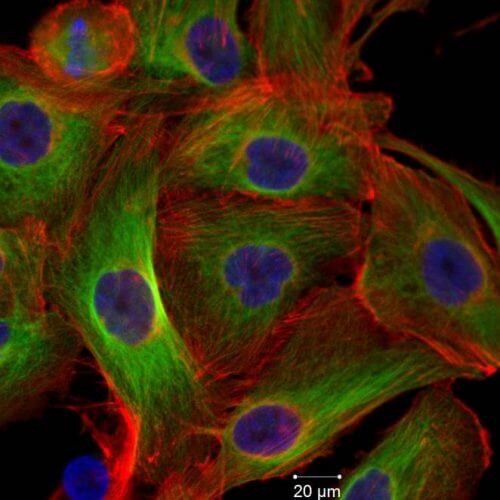Cancer cells, which move in the bloodstream in groups and not in individuals, are responsible for the formation of metastases and the spread of the disease

By Vivian Callier, The article is published with the approval of Scientific American Israel and the Ort Israel network, 05.06.2016
The overwhelming majority of cancer deaths are caused by metastases: it is more difficult to treat the disease when cancer cells detach from the main tumor and settle in new places in the body. A new study shows that, contrary to the hypotheses, most metastatic tumors are not seeded by single cells released from the primary tumor, but by aggregates, containing a variety of cancer cells, which leave the primary tumor as a group and travel together in the bloodstream. The cells within these mobile aggregates communicate with each other and produce characteristic proteins that may serve as targets for drugs or as biomarkers indicating the risk of developing metastases.
the biologist Andrew Ewald, who specializes in the study of cancer cells at Johns Hopkins University, and his team conducted an experiment designed to determine how metastases form. They created tumors in mice by injecting a mixture of different types of cancer cells into the mammary glands of the rodents. Each of the cell types the researchers used glowed a different color when examined under a microscope. If metastases arise from a single cell, then they should glow a single color. And if, on the other hand, the metastatic tumors are seeded through clusters of cells, they should glow as multicolored spheres. The team found that approximately 95% of the cancerous tumors that were formed were indeed multicellular and therefore multiple cells of different types were formed. In the photograph you can see such a metastasis in the health.
In another experiment, the researchers seeded hundreds of cancer cells on top of a Petri dish without touching each other. Almost all the cells died. In contrast, when the researchers seeded a similar number of cells in another petri dish when they were grouped into clusters, the cells eventually formed more colonies than the cells in the first plate, even though there were fewer initial "seeds" at the beginning of the experiment. "When the number of cells is equal, the efficiency of creating metastases in the clustered cells is greater than 100 times," says Ewald. the results Were published February 2016 in the Proceedings of the National Academy of Sciences (PNAS).
"We may be able to use this discovery to develop targeted ways to attack metastatic cells."
It is still not completely clear why the clustered cells survive better and form metastases more efficiently, but it is likely that cooperation between the tumor cells within the cluster, for example molecular signaling between the cells, protects them from death in the bloodstream or at distant sites, explains Joan Brugge, a biologist at Cancer cells at Harvard Medical School that did not participate in the study.
And as for the potential benefit the research might bring to patients, Ewald's team also found that these mobile clusters share common characteristics, and almost all of them make the protein Curtin 14. "We may be able to use this to develop targeted ways to attack metastatic cells," says Ewald. The idea is to destroy these cells wherever they are in the body, whether they are proliferating or not. This is a different method from most conventional treatment approaches that focus on attacking the rapidly multiplying cells rather than the cells that migrate in the bloodstream - those invasive cells that initiate secondary cancerous tumors.

One response
A beautiful and clever experiment.
The conclusion is strong on the model they studied - maybe also for other tumors and maybe not (there are many cells with a preference for grouped growth and there are many cells that grow well alone).